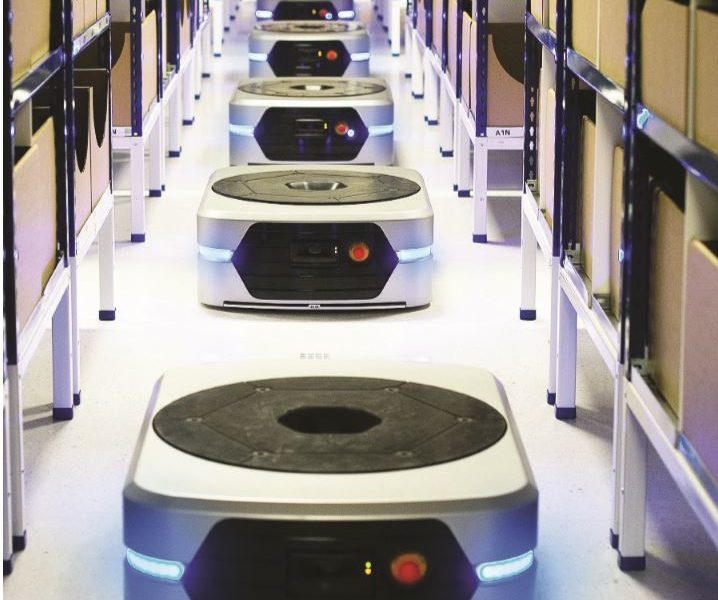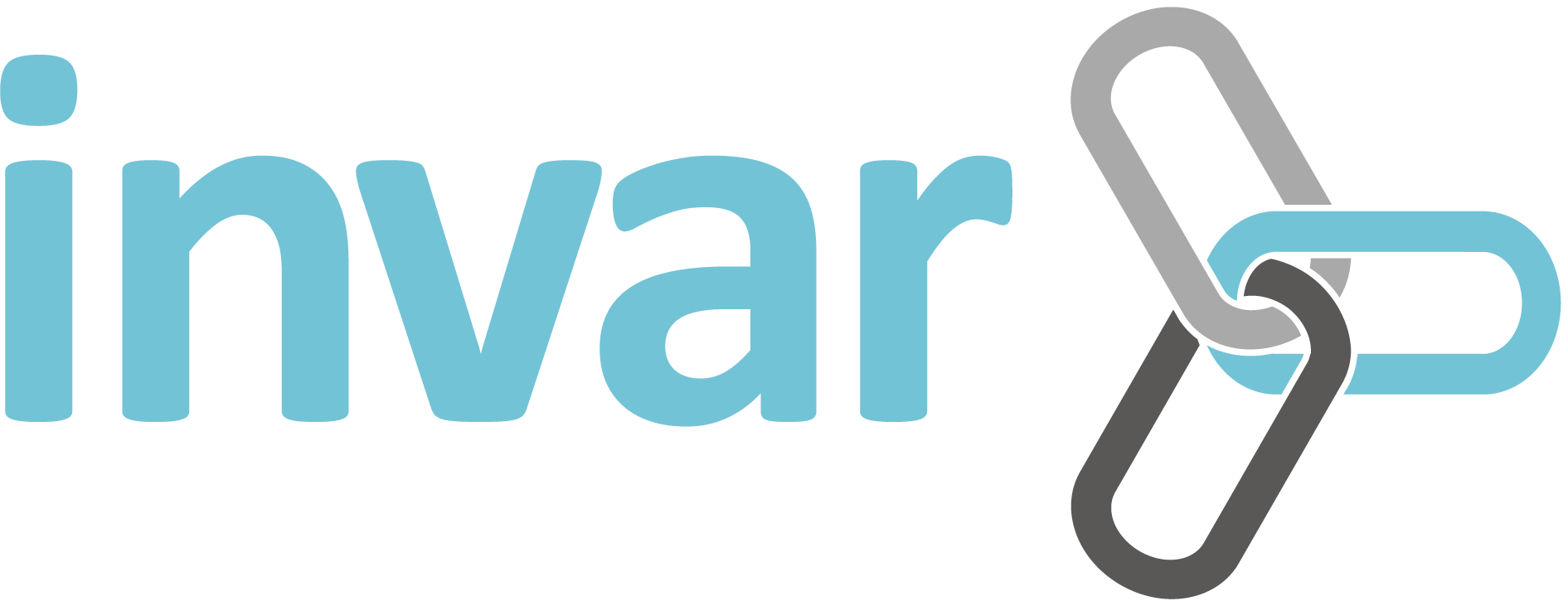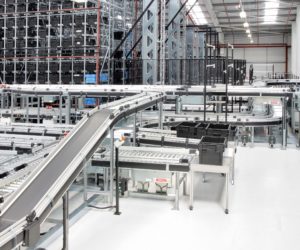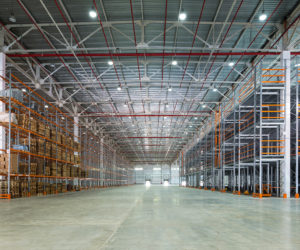
Aug 5th, 2019
Should you use Autonomous Mobile Robots (AMRs) for your order fulfillment operation?
If you work in supply chain management or in order fulfillment then you have most likely heard about the use of Autonomous Mobile Robots (AMRs) for automated storage, retrieval, and/or movement of goods as it has been a popular trade show and industry publication topic. The technology is showing up in very large E-commerce fulfillment centers. There are now numerous companies manufacturing and marketing AMR solutions as well. With all the hype and media attention around the technology you are likely wondering if the technology is a good solution for your company. This article will hopefully give you a better understanding of the technology and when to consider using it.
AMR Basics
I think it would be valuable to first provide you with some basic information about Autonomous Mobile Robots (AMRs) which will help put the technology into proper context.
- AMRs can carry totes, cartons, pallets, shelving or rolling racks autonomously around the warehouse
- AMRs typically cost about the same as a full time employee’s annual fully burden salary in the U.S.
- Travel at max speeds around 1.5 meters/second or 3.5 miles/hr (which is about the same a fast walking speed)
- Can navigate around people safely with the proper devices which can include things like cameras, ultrasonic distance sensors, radar sensor, and profile laser scanners
- Require supervisory level software to store and manage the physical working environment/map, assign tasks to AMRs, manage the task queue and priorities, and interface to WCS, WMS or ERP software for tasks
- Can navigate without any other fixed navigation hardware for positioning, but without fixed navigation markers they require warehouse areas to be pre-mapped or scanned so that the supervisory software can plan travel paths and manage AMR traffic
- Can react to real time changes in their working environment and adjust travel paths
- Solutions can be implemented in under 2 months but could take +9 months if large and/or complex
Automation hardware integration
The world is changing rapidly and this goes the same with consumer buying habits and expectations. In order to stay competitive, companies have to increase throughput, reduce the time from order to fulfilment and maintain a near flawless execution of orders. As there is no way of beating the law of diminishing returns the only way to keep pace is to introduce automation. Since this is an inevitability, it makes sense that your WMS is able to integrate with a range of automation hardware. Failure on this front will require the adoption of yet another system when the hardware is deployed adding further complexity to your supply chain.
Reasons to use AMRs
AMRs are being used in different ways by different solutions providers to benefit order fulfillment operations. Well designed solutions can increase order accuracy, increase inventory accuracy, reduce inventory size, and reduce order processing times. The largest focus on use of the technology is with increased employee productivity which reduces labor demands, either for operational cost savings or as need to decrease dependency on labor. The most common strategy for AMR solutions that provides the biggest productivity gains is to reduce employee travel or walk time. There are two main methods being used to achieve this with AMR technology; an AMR enhanced Person-to-Goods solution and a fully automated Goods-to-Person solution. Person-to-Goods just means that the employee still has to physically move to the storage location and Goods-to-Person means that the item can physically be moved to the person with the use of automation.
The AMR enhanced Person-to-Goods solution sends AMRs out into the warehouse to work alongside employees who perform the actual placement of goods into, or retrieval out of, storage shelving or bins. The AMRs reduce employee walk time by bringing goods to, or taking goods away from, the employee so that they are free to perform more picks or replenishments rather than travel with the goods to other processing areas. Employees still have to walk between different areas of the warehouse and to different picking or replenishment locations, but the AMRs can eliminate non value added travel such as carrying an order to a pack-out station. This is the basic concept behind the solutions companies like Locus Robotics, 6 River Systems and Fetch Robotics are offering, but they all have their slightly different takes on this solution.
The fully automated Goods-to-Person method eliminates nearly all the employee travel time by using the AMRs to bring the storage shelving units, or bins, to the employee for picking or replenishment and then returning the shelving units, or bins, back into to storage. This is called Goods-to-Person picking. This is the solution companies like GrayOrange, and inVia are using. This also seems to be the solution that foreign technology companies are more focused on bringing competitive hardware into the United States for, China and India being the most notable. A Goods-to-Person also puts every item into a pick-able location so that it can self adjust to changes in SKUs, changes in SKU velocity, and changes in the number of SKUs.
The potential productivity gains for either the AMR enhanced Person-to-Goods or fully automated Goods-to-Person AMR solutions are relatively easy to understand. If an employee spends 70% of their time traveling between value added tasks and only 30% of their time actually performing their tasks than there is a potential 70% reduction in labor if the travel time can be completely eliminated. In theory this is exactly what a Goods-to-Person AMR solution does by bringing all the goods to the employee. The Person-to-Goods solution focuses on reducing the 70% non-productive travel time to something more reasonable such as 50% which would still net a 20% reduction in labor. Now for the same investment amount the obvious solution choice should be the Goods-to-Person, but as you likely would suspect the investments are not the same as the Goods-to-Person solutions typically require more AMRs to achieve the same amount of throughput as the Person-to-Goods. There is also a larger initial cost for a Goods-to-Person solution because the entire storage area must be modified to include special shelving systems. Alternatively, the Person-to-Goods solutions can work with existing shelving and racking.
The Good and Bad for AMR Order Fulfillment Solutions
Beyond the productivity gains from reduced employee travel, there are other advantages for these AMR solutions as compared to other automation enhanced order fulfillment solutions. AMR solutions, just like most automation driven order fulfillment solution, also have their disadvantages. We should understand these as well.
Enhanced Person-to-Goods AMR Solution
Advantages:
- Provides higher levels of worker productivity for order fulfillment by removing large percentages of employee travel
- Increases order picking accuracy by having the employees follow automation to the correct locations and confirm picks through RF devices or vehicle mounted touch screens
- Relatively low cost for entry at $50,000-$200,000 for initial installation + Cost of AMRs and charging stations to support required work volume (cost dependent on number of operations and integration requirements to WMS or ERP)
- No fixed hardware other than charging stations
- Basic systems may require no software integration to host WMS or ERP
- Upscale quickly with the addition of more AMRs
- Flexible to adapt to new warehouse layouts with simple configuration changes in software
- The automation can be supplemented with manual picking during peak volumes so that you don’t have to design automation around peak volumes
- Picking areas can use full building height to have reserve storage locations above picking locations when needed for storage density
Disadvantages:
- Provides limited productivity gains compared to other automated solutions including the Goods-to-Person AMR solution
- May add little to no value in operations that have small number of SKUs to pick from or small picking areas
AMR Goods-to-Person Solution
Advantages:
- Provides very high levels of worker productivity for order fulfillment by removing almost all worker travel
- Supports extremely large number of SKUs where each single item put into storage can be a separate pick-able SKU (excellent solution for SKU proliferation, serialized SKUs, or short SKU life cycles)
- Increases picking and inventory accuracy by using pick-to-light and put-to-light hardware to direct workers to shelving or bin locations
- Automatically reorganizes storage locations to keep highest moving SKUs near pick or replenishment stations for quicker pick times
- Keeps inventory in mostly secured area (workers are physically kept out of automated storage areas)
- Supports random location put-away which makes replenishment much more efficient
- Allows for returns to be available for order reallocation much faster
- Provides denser storage due to random put-away and by storing shelves units nested or multiple deep (keeping slower moving SKUs in nested locations that would require shuffling of shelves to access)
- Minimal fixed hardware required that includes fencing in storage area, charging stations, and work stations for loading and unloading goods from storage shelving units
- Upscale quickly with more AMRs and/or workstations for picking or replenishment
Disadvantages:
- Has a larger initial investment of $150,000-$250,000 + AMRs, shelving units, charging stations, and work stations to support required work volume (cost dependent on number of operations)
- Automates all replenishment and picking so that manual backup processes are difficult, at best, to implement
- To use full building height for storage, mezzanines bust be installed that can either be used to increase the automated storage area where AMRs use lifts to access higher levels, or the upper levels can be used only for reserve storage that is manually accessed
As a word of caution, many AMR solution providers claim attractively high productivity gains that don’t necessarily all come from the automation but instead can come from process improvements that could be implemented without the automation. For example, the most common conventional way to reduce overall travel time for an employee performing picks is to have them pick multiple orders at a time. This doesn’t require any automation but does require software that can properly direct the employee to pick and place items correctly segmented on large pick carts to maintain order accuracy. This batch or cluster order picking process is supported by all major Warehouse Management System software due to its obvious and significant benefits.
Good Software Management is Paramount
The key to any successful and highly optimized solution is in the software control of the technology. AMR technology providers typically provide fleet management software that will assign tasks to AMRs and manage the travel routes to optimize the AMR system and prevent traffic jams, however, a fully optimized system needs to take into consideration much more than just the immediate AMR task queue and movements. To get the full advantage out of the technology, AMR solutions should be considered for multiple processes and not just picking for example. The same hardware can be used for receiving, put-away, replenishment, returns, value added services, and cycle counting. The additional processes included in the demands of your system require a more global focused software solution that can manage multiple processes, other automated equipment such as conveyor, non-automated vehicles, and workers.
Traditional WCS, WMS and ERP systems do not manage all these processes and resources by themselves. It is possible with an AMR solution provided by some vendors you will need at least three software systems.
- 1. WMS or ERP to manage inventory, orders, receiving, shipping, VAS, and other processes
- 2. WCS to manage conveyor such as a print-and-apply label lines, pack-out sorter, or shipping sorter
- 3. AMR Fleet Software to manage the automated vehicles and vehicle tasks
Be careful that you are fully evaluating the software requirements when investigating AMR solutions. There are few companies, of which Invar Systems is one, that can provide a single software solution that can perform the tasks of all three of the software systems listed above. The single software system solution reduces software integration risks, reduces demands on your IT services, lowers solution cost, and drives the highest levels of solution optimization and productivity gains.
When to Consider AMR Solutions
AMR solutions can provide benefits to almost any order fulfillment operation but the benefits must be weighed against the costs. The cost-benefit analysis should also be put into comparison against other possible solutions. This analysis must really be done on a specific case-by-case level, however I can offer some guidelines to when you should at least be considering AMRs as a possible piece of your order fulfillment solution.
- Your order volumes are over 5,000 per day and one or more of the following bullets applies as well…
- A lot of your orders are multi-line orders (over 60%)
- Your picking area is over 25,000 ft^2
- You are struggling with SKU proliferation or seasonality and are often having to re-slot, or even change the layout of, your picking areas
- Distances between processing areas such as receiving, storage, VAS, picking and/or shipping are over 250 ft
- Average SKU, or order, cubic volume size makes it difficult to convey or to pick multiple orders at the same time to carts
- Your current order picking and replenishment methods are creating vehicle and personnel traffic bottlenecks
- You can not keep up with peak, or possibly even average, order volumes with your available labor pool
- You need to find solutions that can reduce order cycle time
- You have to handle a significant amount of high dollar value goods which requires secure storage
If you feel some of the bullet points above do apply to your operations, it would be prudent to discuss your possible needs with an industry expert. When you do decide to reach out to an industry expert to get further guidance on AMR and other technologies, be wary of consultants or solution providers that have one specific technology that they base their solutions on. Even though they may have a good solution for you, there may be a better one still. As the saying goes, “to the person that only has a hammer, everything looks like a nail,” and there are a lot of hammer manufacturers out there.
About Invar Systems
Invar Systems offers world class engineering, consulting, project integration and warehouse management & control solutions. We specialize in complex automated solutions such Shuttles, Mini-Loads, ASRS, and AMRs, but have also executed systems that have zero automation. It is our view that each client deserves custom-tailored solutions. Our approach is to evaluate each client’s needs on a case-by-case basis to provide the best solution that will enable you to take control of your operations.

Contact Us
Contact us if you have questions or would like to set up an appointment to discuss your warehouse control systems.
Contact Us



